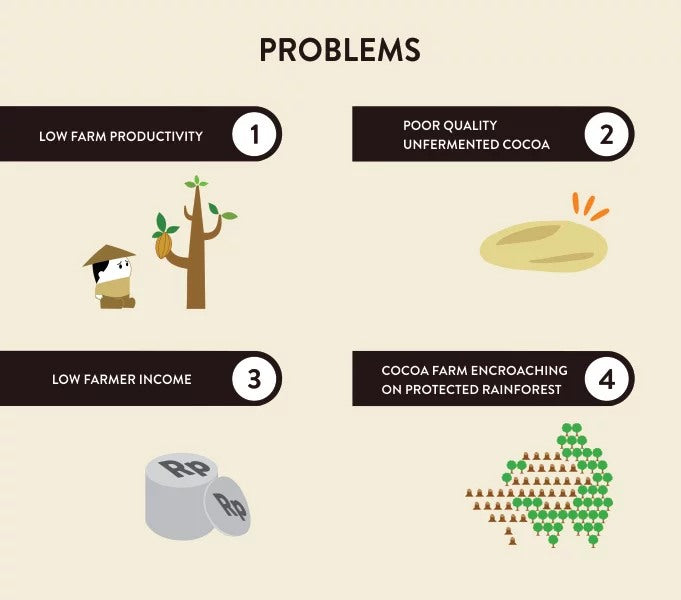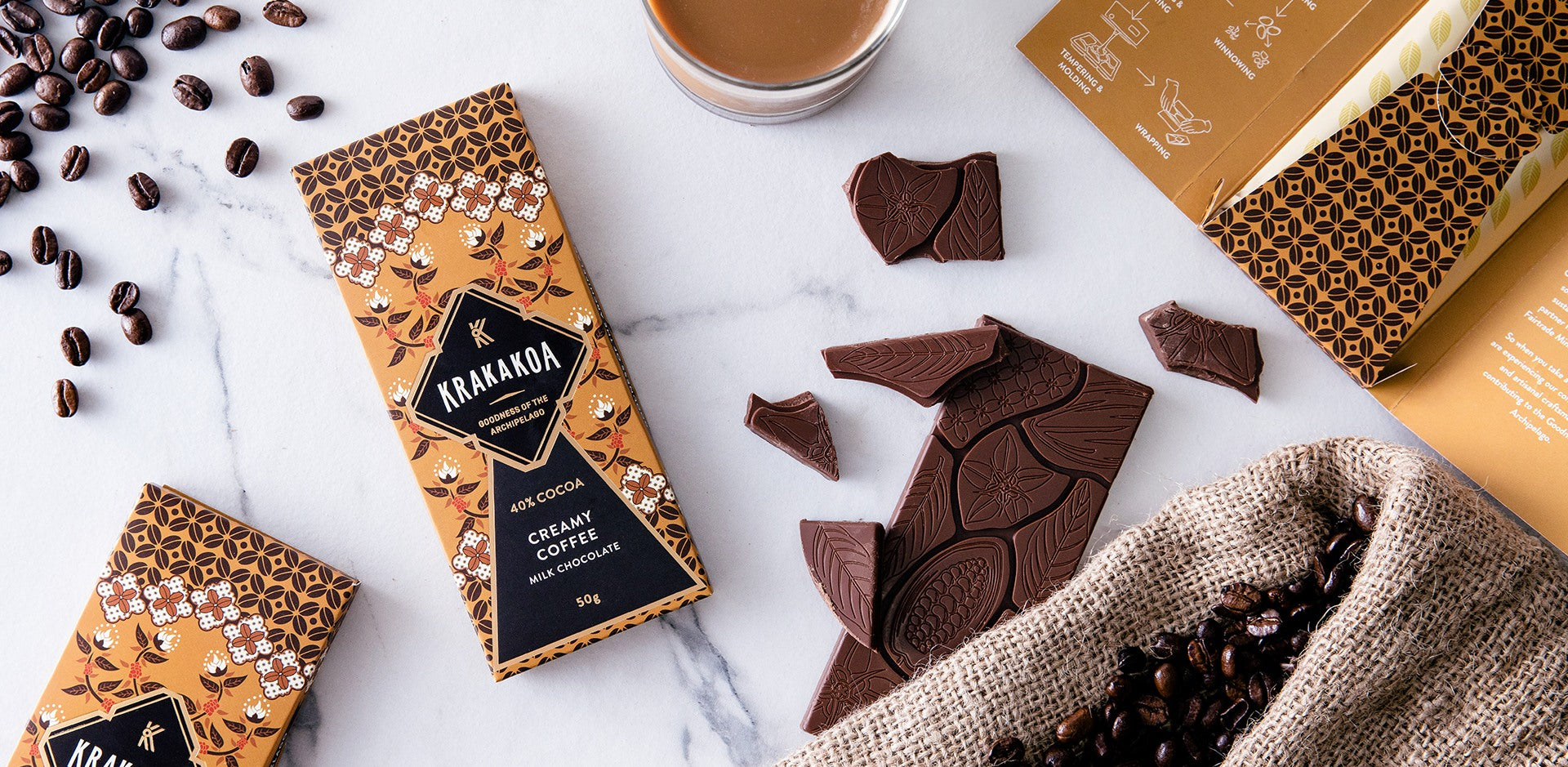“Looking after cocoa trees is like looking after a girlfriend,” titters Jarwanto, a cocoa farmer in Lampung, South Sumatra. He picks at a leaf growing from one of his cocoa trees growing on the gentle slopes of his plantation located in the village of Tanjung Rejo, and a jocular grin slowly cracking across his face. “You have to look after it,” he continues, “or it won't look after you.”
Jarwanto has always wanted to be a farmer growing up. He has been planting cocoa for the past 20 years, in addition to other crops like pepper, chilli, and nutmeg. As a cocoa farmer in Indonesia, he contributes to some of the country's 400,000 tonne output of cocoa beans, making the archipelagic nation the third largest producer in the world after the Ivory Coast and Ghana. Despite this, there are many issues that keep even more farmers from farming cocoa trees (theobroma cacao), including poor understanding on how to properly manage plantations and fight diseases.
In addition to disease, another issue plaguing the Indonesian cocoa sector low quality and lack of added value: despite being the world's third-largest producer of cocoa, the quality of Indonesian beans cannot compete with beans from other cocoa-producing countries. Indonesian farmers are not well-educated in the cocoa fermentation process, which results in poor tasting unfermented beans.



